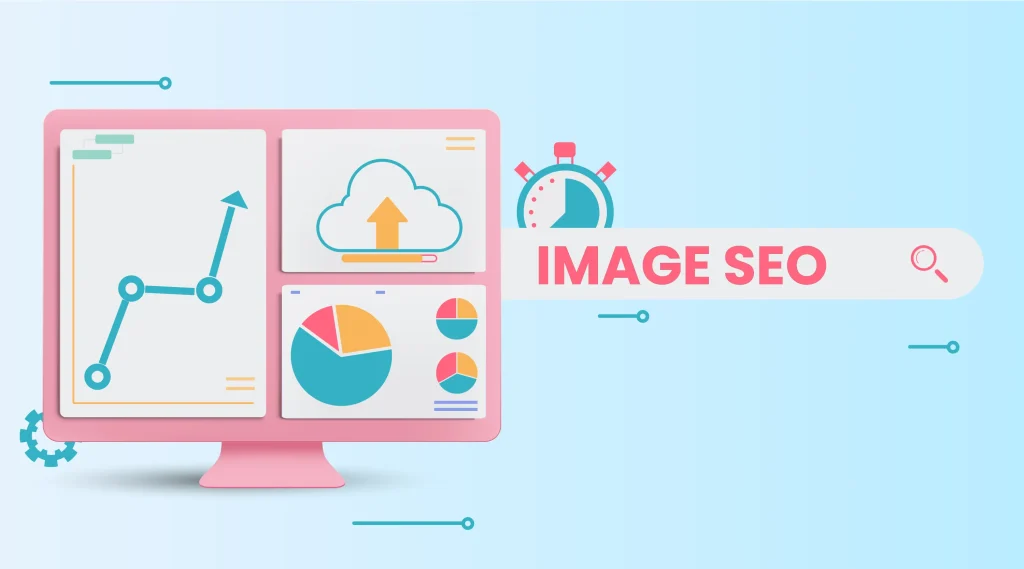How to Optimize Images for SEO and Faster Loading

Images play a vital role in enhancing user experience and visual storytelling, but if not optimized correctly, they can hurt your site’s speed and search rankings. Image optimization is more than just reducing file size—it involves strategic decisions that affect SEO, accessibility, and overall site performance. Here’s how to optimize your images the right way.
Choose the right file format for your needs
Selecting the appropriate file format can have a major impact on image quality and loading speed. JPEG is ideal for photographs or complex images with gradients. It offers a good balance of quality and compression. PNG, on the other hand, supports transparency and is suitable for logos or images with fewer colors. WebP is a modern format supported by most browsers and offers superior compression without noticeable loss in quality—making it a preferred choice for web performance.
Resize images to match display dimensions
Uploading oversized images and relying on the browser to scale them down wastes bandwidth. Before uploading, resize your images to the exact dimensions required by your layout. For example, if a hero image is displayed at 1200 pixels wide on desktop, uploading a 3000-pixel version is unnecessary and slows down load times. Use tools like Photoshop, GIMP, or online editors to crop and resize images accordingly.
Compress files without sacrificing quality
Compression reduces file size, which speeds up page loading. Lossy compression removes some image data to reduce size, while lossless compression retains original quality. Use tools like TinyPNG, ImageOptim, or Squoosh to compress your images before uploading them to your site. For bulk optimization, many CMS platforms offer plugins that automatically compress images upon upload.
Use descriptive, keyword-rich file names
Google cannot “see” images—it relies on file names and surrounding content to understand what an image is about. Avoid generic names like IMG_001.jpg. Instead, use descriptive, keyword-focused names such as red-running-shoes.jpg. This practice not only improves SEO but also helps with image search visibility.
Add alt text for accessibility and relevance
Alt text provides context for visually impaired users and also helps search engines understand the image’s purpose. Use concise and meaningful descriptions that include relevant keywords naturally. Avoid keyword stuffing or writing alt text that doesn’t match the image content. For example, for a photo of a woman using a skincare product, a good alt tag might be: woman applying organic facial cream at home.
Implement lazy loading to improve performance
Lazy loading defers the loading of off-screen images until the user scrolls near them. This dramatically reduces initial page load times, especially on image-heavy pages. Most modern website builders and CMS platforms like WordPress support lazy loading natively or through plugins. Adding the loading="lazy" attribute to your img tags is a simple yet effective fix.
Serve images via a content delivery network (CDN)
CDNs distribute your image assets across multiple servers worldwide, ensuring faster delivery to users regardless of their location. By serving images from a CDN, you reduce latency and offload bandwidth from your main server. Many popular CDNs like Cloudflare, BunnyCDN, or Amazon CloudFront offer specific features optimized for image delivery, such as automatic format conversion and real-time resizing.
Use structured data for image-rich content
If your content includes products, recipes, or events, consider adding structured data (schema markup) to help Google display rich results in image search. Proper implementation of structured data increases your chances of enhanced visibility, including features like badges or product availability directly in the image search results.
Monitor image performance regularly
Even with optimization, ongoing performance tracking is key. Use tools like Google PageSpeed Insights or Lighthouse to identify image-related bottlenecks. These tools offer actionable recommendations for improving load time and optimizing assets further. Regular audits ensure your site remains fast and SEO-friendly as new images are added.
Optimizing images is not a one-time task—it’s an integral part of web maintenance and search engine strategy. When done correctly, image optimization enhances your site’s usability, improves SEO performance, and ensures your pages load swiftly on all devices.



